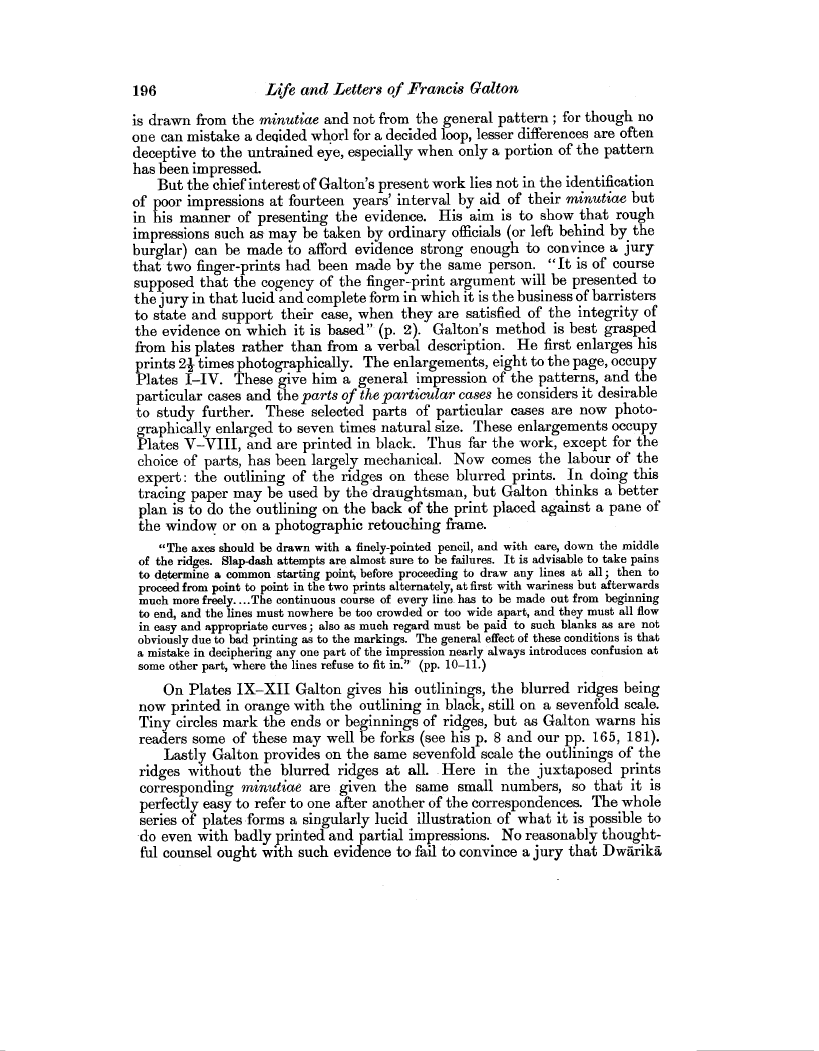| ||||||

OCR Rendition - approximate
196 Life and Letters of Francis Galton is drawn from the minutiae and not from the general pattern ; for though no one can mistake a decided whorl for a decided loop, lesser differences are often deceptive to the untrained eye, especially when only a portion of the pattern has been impressed. But the chief interest of Galton's present work lies not in the identification of poor impressions at fourteen years' interval by aid of their minutiae but in his manner of presenting the evidence. His aim is to show that rough impressions such as may be taken by ordinary officials (or left behind by the burglar) can be made to afford evidence strong enough to convince a jury that two finger-prints had been made by the same person. "It is of course supposed that the cogency of the finger-print argument will be presented to the jury in that lucid and complete form in which it is the business of barristers to state and support their case, when they are satisfied of the integrity of the evidence on which it is based" (p. 2). Galton s method is best grasped from his plates rather than from a verbal description. He first enlarges his prints 2 1- times photographically. The enlargements, eight to the page, occupy Plates I-IV. These give him a general impression of the patterns, and the particular cases and the parts of the particular cases he considers it desirable to study further. These selected parts of particular cases are now photographically enlarged to seven times natural size. These enlargements occupy Plates V-VIII, and are printed in black. Thus far the work, except for the choice of parts, has been largely mechanical. Now comes the labour of the expert : the outlining of the ridges on these blurred prints. In doing this tracing paper may be used by the draughtsman, but Galton thinks a better plan is to do the outlining on the back of the print placed against a pane of the window or on a photographic retouching frame. "The axes should be drawn with a finely-pointed pencil, and with care, down the middle of the ridges. Slap-dash attempts are almost sure to be failures. It is advisable to take pains to determine a common starting point, before proceeding to draw any lines at all ; then to proceed from point to point in the two prints alternately, at first with wariness but afterwards much more freely....The continuous course of every line, has to be made out from beginning to end, and the lines must nowhere be too crowded or too wide apart, and they must all flow in easy and appropriate curves; also as much regard must be paid to such blanks as are not obviously due to bad printing as to the markings. The general effect of these conditions is that a mistake in deciphering any one part of the impression nearly always introduces confusion at some other part, where the lines refuse to fit in." (pp. 10-11.) On Plates IX-XII Galton gives his outlinings, the blurred ridges being
|